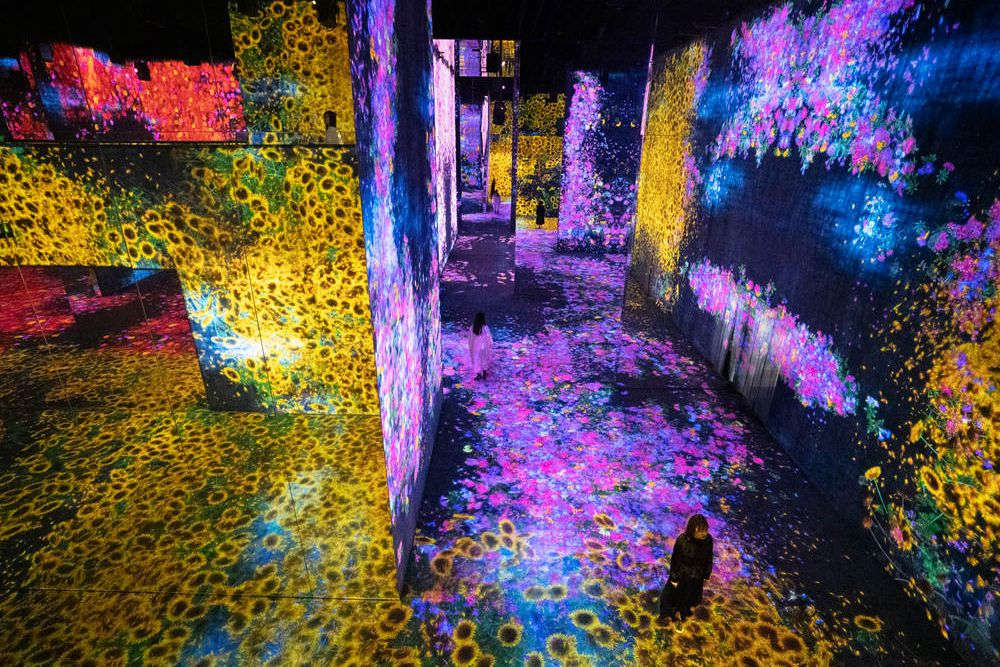Valley of Flowers and People: Lost, Immersed and Reborn
teamLab, 2020, Interactive Digital Installation, Endless, Sound: Hideaki Takahashi
The seasons change gradually across the installation space.
A seasonal year of flowers blossom according to the changing seasons, and the place where they grow gradually moves.
The flowers bud, grow, and blossom before their petals begin to wither and eventually fade away. The cycle of growth and decay repeats itself in perpetuity. If a person stays still, the flowers surrounding them grow and bloom more abundantly. If viewers touch or step on the flowers, they shed their petals, wither, and die all at once.
The artwork is not a pre-recorded image that is played back: it is created by a computer program that continuously renders the work in real time. The interaction between people and the installation causes continuous change in the artwork: previous visual states can never be replicated, and will never reoccur. The picture at this moment can never be seen again.
In spring in the Kunisaki Peninsula, there are many cherry blossoms in the mountains and rapeseed blossoms at their base. This experience of nature caused teamLab to wonder how many of these flowers were planted by people and how many were native to the environment. It is a place of great serenity and contentment, but the expansive body of flowers is an ecosystem influenced by human intervention, and the boundary between the work of nature and the work of humans is unclear. Rather than nature and humans being in conflict, a healthy ecosystem is one that includes people. In the past, people understood that they could not grasp nature in its entirety, and that it is not possible to control nature. People lived more closely aligned to the rules of nature that created a comfortable natural environment. Before the modern era, civilization prospered by the sea. Since then, it has moved inland, leaving pockets of isolated people in the solitary valleys. In these valleys there are faint traces of the relationship with nature that existed. We believe that these valleys hold faint traces of this premodern relationship with nature that once existed.






















